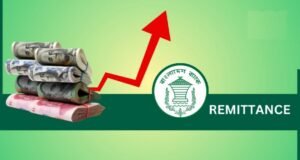 Major powers and Iran have stretched talks on Tehran’s nuclear programme into a second day past an end-March deadline, with diplomats saying the chances for a preliminary deal were balanced between success and collapse.
Major powers and Iran have stretched talks on Tehran’s nuclear programme into a second day past an end-March deadline, with diplomats saying the chances for a preliminary deal were balanced between success and collapse.
Both Brent and US crude prices snapped three-session losing streaks on Wednesday, gaining $2 or more after data from the Energy Information Administration (EIA) showed a fall in rigs drilling for oil resulted in a drop in US output last week for the first time since late-December.
Brent crude for May delivery LCOc1 was down 46 cents at $56.64 a barrel.
The contract had settled $1.99 higher on Wednesday.
US crude for May delivery CLc1 was down 56 cents at $49.53 a barrel, after closing up $2.49, or 5.2 percent.
In the Swiss city of Lausanne, US Secretary of State John Kerry and German Foreign Minister Frank-Walter Steinmeier said they would stay at least until Thursday in an effort to seal a “political” agreement with Iran, a step towards a final pact due by end-June that could release more oil on to global markets.
Optimism for an agreement is thin among many analysts.
“(I expect) nothing beyond a general statement of intentions to keep talks going through spring,” professor Scott Lucas of EA WorldView, a specialist website on Iran and Syria, told Reuters Global Oil Forum.
Despite US production falling for the first time since late December, crude inventories still rose last week to a record high for the 12th straight week.
“Slower growth in inventories is signalling that production is finally catching up to the recent decline in the US rig count,” analysts at ANZ said in a note.
The EIA pegged the US crude stock build last week at 4.8 million barrels, while analysts polled by Reuters had expected a 4.2-million-barrel build on average.
“This is a vast difference considering that it had been increasing by 7 to 10 million barrels (a week) over the past few weeks,” Phillip Futures said in a note.
Oil prices were also supported on Wednesday as the dollar was pulled lower by fresh signs that US economic growth slowed in the first quarter.
 Weekly Bangla Mirror | Bangla Mirror, Bangladeshi news in UK, bangla mirror news
Weekly Bangla Mirror | Bangla Mirror, Bangladeshi news in UK, bangla mirror news







